Possessing potential for various uses as a material for restoration of cultural properties
Funori Polysaccharide (Product name: OF-1)
What is Funori Polysaccharide?
OF-1 (chemical-free manufacturing/freeze-dried product)
OF-1 is a product made from extracting the polysaccharide (funoran) from funori.
Our production process makes no use of chemicals; we only extract the polysaccharide (funoran) from the funori.
After extraction, we freeze dry the funoran in order to prepare it for long-term storage.
Funori is a species of seaweed that is harvested along Japan's coasts.
As well as the viscous polysaccharide called "funoran," funori also contains components such as proteins and lipids.
OF-1 is made through our unique manufacturing process, where funori's polysaccharides are separated from the other components.
With the cooperation of Fukui Prefectural University and Ishikawa Prefectural University, we were able to complete development over 4 years.
Funori is a species of seaweed that is harvested along Japan's coasts.
As well as the viscous polysaccharide called "funoran," funori also contains components such as proteins and lipids.
OF-1 is made through our unique manufacturing process, where funori's polysaccharides are separated from the other components.
With the cooperation of Fukui Prefectural University and Ishikawa Prefectural University, we were able to complete development over 4 years.
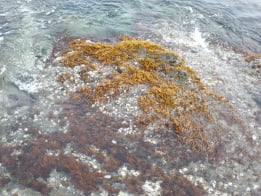
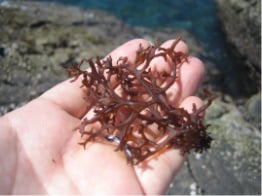
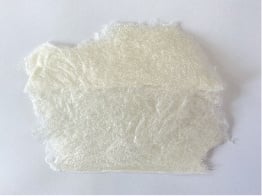
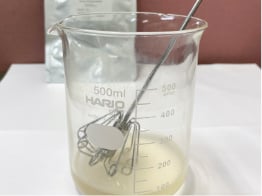
Ingredients of OF-1
Measurement Results of Funori Extract's Physical Properties
(Test Results from Ishikawa Prefectural University)
Measurements of Protein Content in Funori Polysaccharide
Method
Detection of total protein amount through the colorimetry method utilized in the Protein Assay Kit (PIERCE).
Results
No more than 5% of the funori was detected to be protein.
Measurement of Sugar Content in Funori Polysaccharide
Method
Detection of total sugar content through the phenol-sulfuric acid method
Results
More than 60% of the extract is polysaccharide, which is a high percentage.
Measurement of Sodium Content in Funori Polysaccharide
Method
Measurement of sodium concentrations through the use of an Atomic Absorption Spectrometer (Thermo Fisher Scientific iCE3500).
Results
The sodium content of our extract is less than 1%, which is significantly less than existing products.
In conclusion, our Funori Polysaccharide has a high polysaccharide content,
low protein and sodium contents.
(*All data was obtained through internal testing and should not be used as a guarantee of results)
(*All data was obtained through internal testing and should not be used as a guarantee of results)
Development History of OF-1
Funori is used in Japan in a variety of situations, including as an adhesive during silk thread
manufacturing, as a thickener in pottery glaze, and in the restoration of paintings.
In particular, Funori Polysaccharide has gained attention as a material
used in the restoration of cultural properties worldwide when combined with Japanese paper.
Within such trends, the need for further transparent Funori Polysaccharide that makes no use
of chemicals has increased. In response to this increase, we have developed the OF-1 product.
manufacturing, as a thickener in pottery glaze, and in the restoration of paintings.
In particular, Funori Polysaccharide has gained attention as a material
used in the restoration of cultural properties worldwide when combined with Japanese paper.
Within such trends, the need for further transparent Funori Polysaccharide that makes no use
of chemicals has increased. In response to this increase, we have developed the OF-1 product.
We hope that this product can be used as a material that contributes to the restoration of many cultural properties.
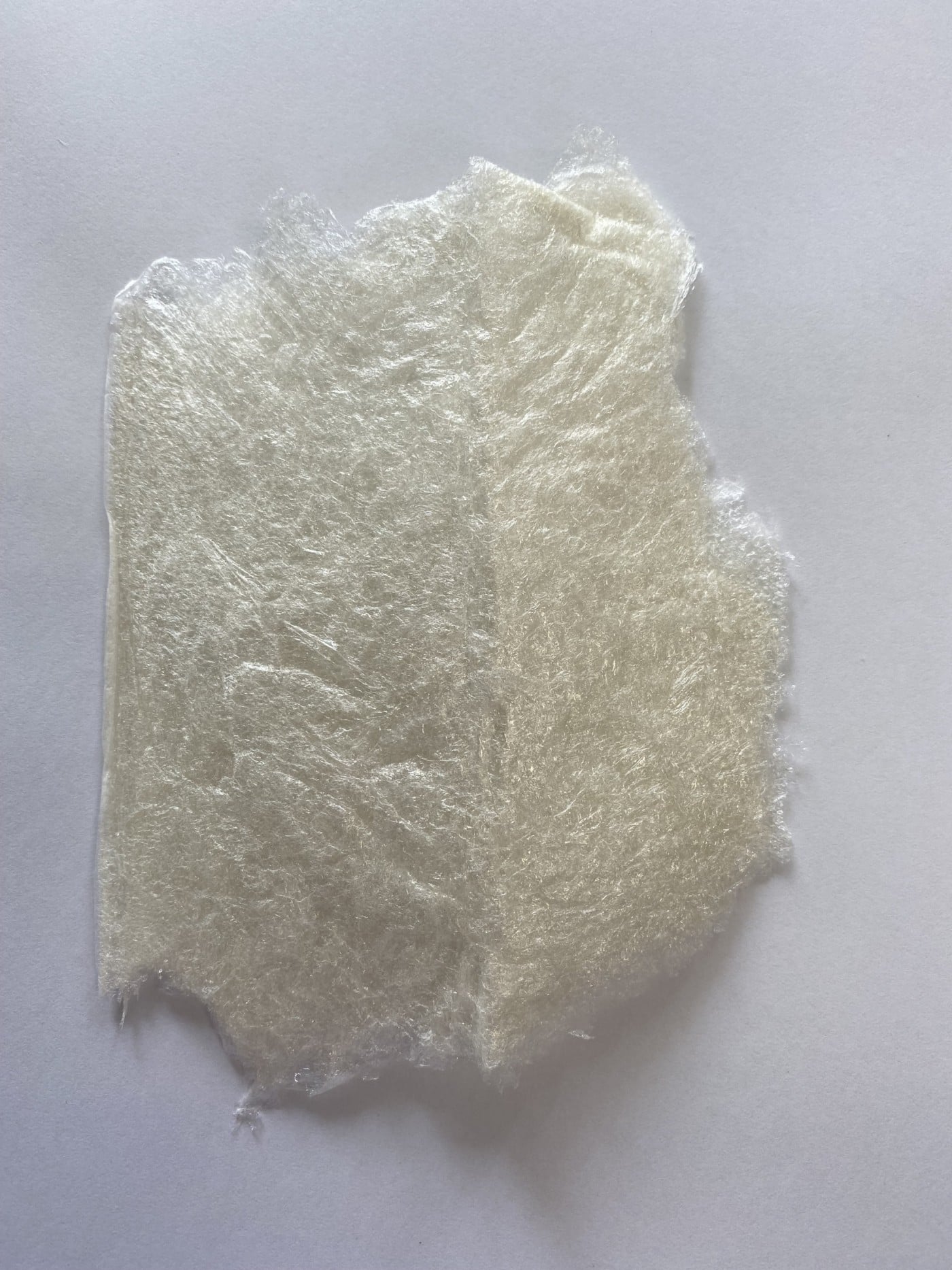
Funori Polysaccharide
(OF-1)
(OF-1)

Restoration Work Using Funori
Features of OF-1
① Adhesion
Almost completely made from only polysaccharide, providing excellent adhesion (compared to our Ita-Funori).
② Reversibility
Soaking the glue film in water after drying will cause it to dissolve again.
③ Transparency
As much coloration is removed as possible.
④ Anti-bacteria
OF-1 has very few impurities, and is rarely affected by mold and bacteria.
⑤ Low-sodium
The sodium content is almost completely removed through dialysis.
⑥ Preservation
Freeze-drying allows for a long storage life. You can use as much as you like whenever you want just by thawing the appropriate amount.
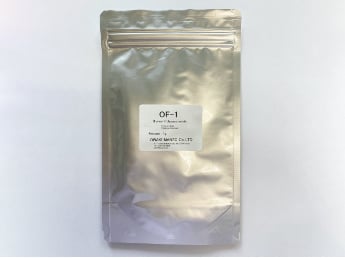
OF-1 Packages
We only provide 1g packages for sale.
The product is placed in an aluminum bag and is freeze dried through dehydration, so if the bag is left unopened it can be safely stored for several years (internal test results).
We provide individual consultations in regards to packaging and pricing in cases of large orders.
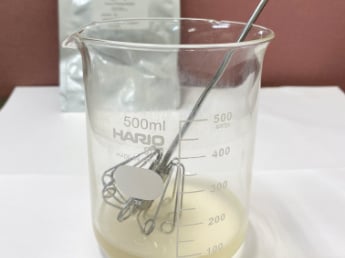
- How to Use OF-1
Measure out the necessary amount of OF-1 from the aluminum bag and dissolve it at the optimal concentration.
It is recommended that the OF-1 be placed in water, stirred from room temperature while adding heat, and dissolved in hot water of 80° C. Once the mixture has completely melted and no solid masses are visible, let it cool before use.
Start at around 1% concentration and adjust according to your preferred consistency.
No added chemicals
Efforts are made to remove all coloration
Uses of OF-1
In Japan, funori has been used in various situations as a natural glue since ancient times.
However, as time has passed, the need for a product made from extracted adhesive that uses no chemicals, is as transparent as possible, and has low sodium, has increased.
In response to this need, we have developed OF-1.
When combined with Japanese paper, it has an unlimited number of potential uses, such as the preservation of the surfaces of cultural properties and as a thickener.
When combined with Japanese paper, it has an unlimited number of potential uses, such as the preservation of the surfaces of cultural properties and as a thickener.
We have confidence that this product will meet the expectations of customers who have thus far been dissatisfied with our traditional Ita-Funori.
1. As preservation of surface when restoring historical documents and scrolls
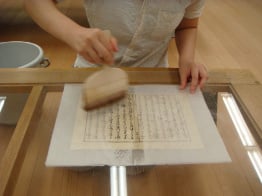
In order to preserve the object under repair, funori is applied to reyon paper and used to adhere the paper to the object (when applied to the face of the object). For scrolls and other objects, funori is also used for surface preservation when repairing the underside and base.
2. As a thickener (in wheat starch, etc.)
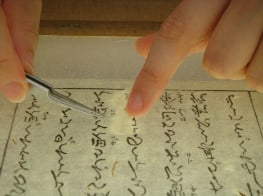
It has also been used as a thickener in Furunori (a wheat starch-based glue aged over decades) and Niwaka glue since ancient times.
3. As a Restoration Agent for Murals
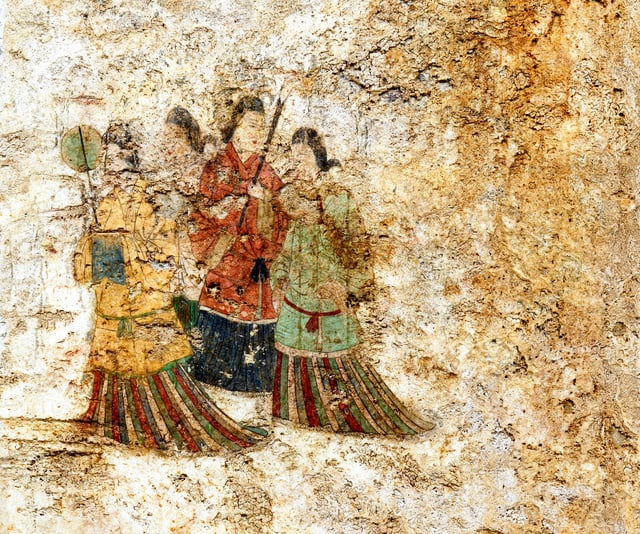
Funori is used in the restoration of the Takamatsuzuka Kofun, as well as overseas on the murals located in the graves of Egyptian queens.
In the Takamatsuzuka Kofun, funori is mainly used as a strengthener for the plaster. For the Egyptian murals, it is used as an adhesive for reyon paper when stripping the wall art.
4. As an Adhesive for Coating Paper of Buildings
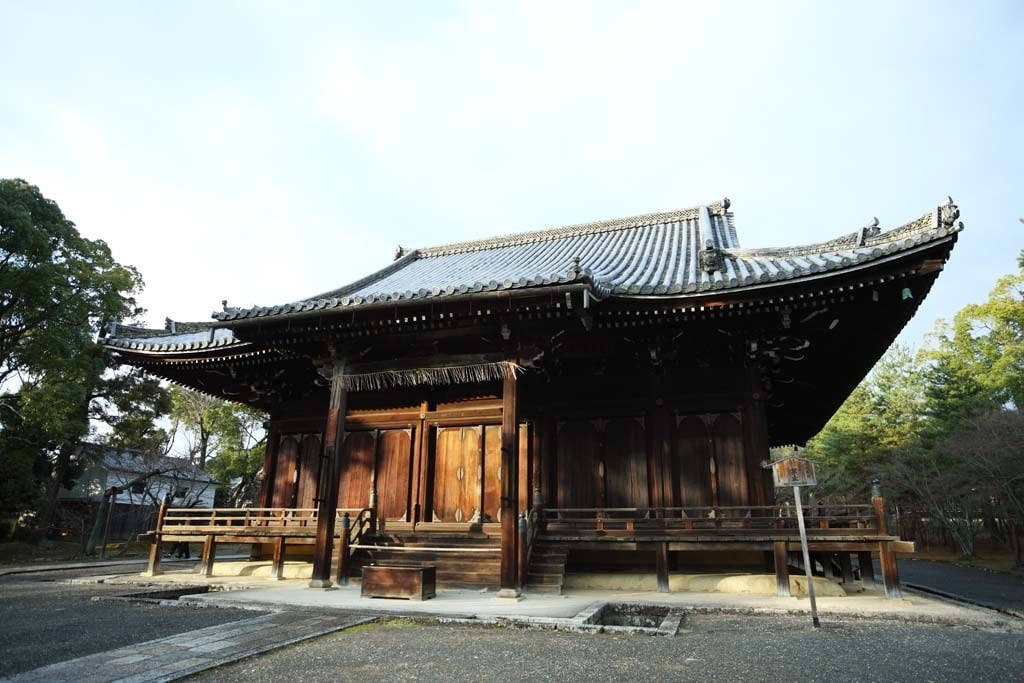
When repairing old wooden buildings such as temples and shrines, funori is used as an adhesive for curing paper in order to prevent effects to the original structure.
5. Other
We believe that there are even more uses for funori of which we are simply not yet aware.
The above examples are those which we have heard from our customers.
We have limited use examples to those for cultural properties, but we believe that funori can also be used in cosmetics, health foods, and various other areas.
Please feel free to contact us if you are interested in learning more.
OF-1 Sales
We sell Funori Polysaccaride in packages of 1g and upward.
■ Our online shop sells units of 1g.
■ We also gladly accept inquiries from overseas.
Please place an order by filling out the quantity of purchase in the contact form. We will reply to your order without delay.
■ We provide separate consultations for customers who place large orders, so please use the contact form to contact us.
Purchases/Payment/Delivery Methods
*For domestic customers
Domestic customers may place an order by clicking the "Online shop here" link.
For payment methods and delivery fees, please click the "return to official top page"
link at the bottom right and confirm the contents of the page.
Please contact us using the contact form if you are considering a large purchase.
Online shop here
*For Overseas customers
Payment by credit card only.
Shipping fees are charged separately.
In general we ship through EMS and International Post, but in some countries there are areas to which we are unable to ship. We ask for your understanding.
Please use the contact form and specify the necessary amount and the shipping address, either in Japanese or English, when contacting us.
However, in some cases there may be a delay in reply. We ask for your understanding.
About Ita-Funori
The Ita-Funori we have manufactured since our establishment in 1900 has always had various uses.
Customers who do not need the level of quality that OF-1 provides can consider the use of Ita-Funori.
Q: what is the difference between Ita-Funori and Funori Polysaccharides?
A: a small amount of chemicals are used in the production of Ita-Funori. In addition, Ita-Funori is merely funori made into sheets of glue, so it is impossible to remove protein and sodium content at the same level as OF-1. It also has a yellow coloration. It is not the case that Ita-Funori, which has a sales history of over 100 years both domestically and abroad, is a bad product, but rather that funori polysaccharide is simply a product for which the commitment to quality is even higher.
In addition, we also sell Ita-Funori in powder form.
Please click the button below if you believe that Ita-Funori meets your needs or are interested in the product.
Our funori polysaccharide has been covered by the local media.
This article comes from a press release we made along with Fukui Prefectural University.
If you have any other questions,
please feel free to contact us using the contact form below.
please feel free to contact us using the contact form below.
Copyright© Owaki Manzo Shoten Co., Ltd., All Rights Reserved.

